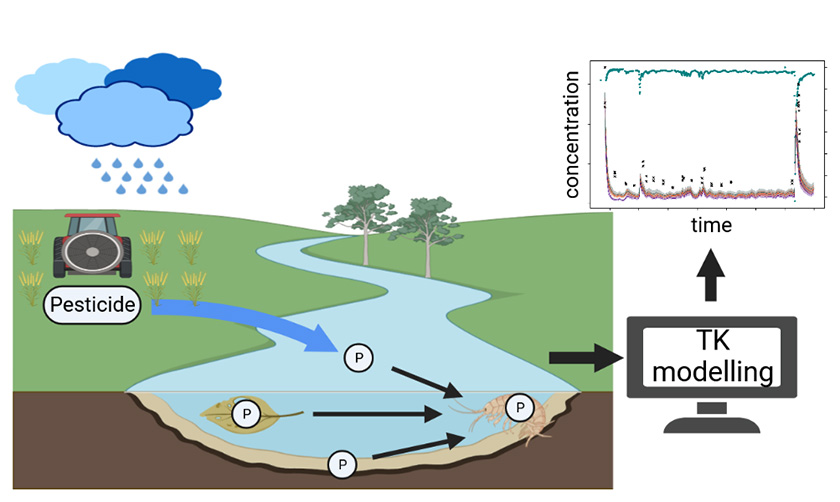Department Environmental Chemistry
Bioaccumulation in chemical risk assessment

Internal body concentrations are the driver of toxicological effects. Previous field studies monitoring micropollutant concentrations in aquatic invertebrates revealed tissue concentrations of many compounds to be substantially higher than predicted from models based on laboratory studies. This was especially the case for (semi-) polar compounds including pharmaceuticals and systemic pesticides. Such deviations can lead to crucial underestimations in environmental risk assessment.
In this project, we investigate processes that could increase the bioaccumulation in the field. Using a field campaign as well as toxicokinetic modelling, we investigate the applicability of laboratory-derived data to the field on the example of Gammarus species. In detail, we study the following processes:
- Dietary uptake pathway
- Particle bound uptake
- Difference in biotransformation
